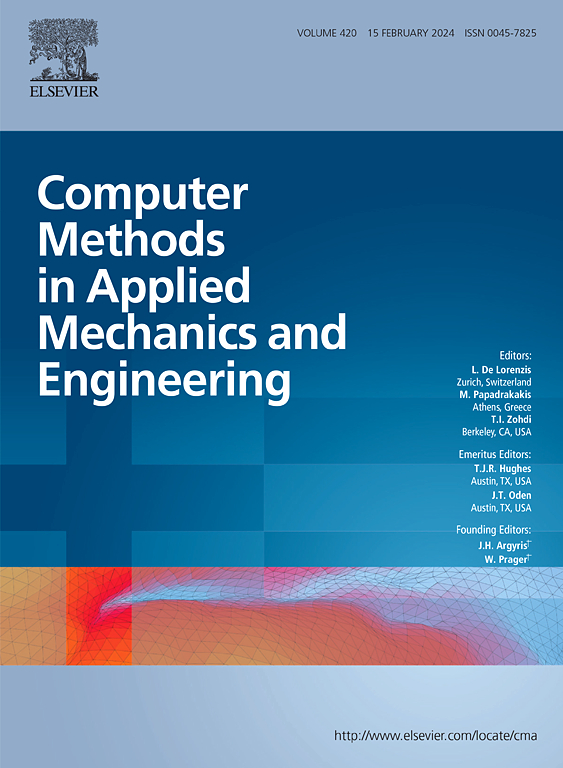Differentiable finite element method with Galerkin discretization for fast and accurate inverse analysis of multidimensional heterogeneous engineering structures
IF 6.9
1区 工程技术
Q1 ENGINEERING, MULTIDISCIPLINARY
Computer Methods in Applied Mechanics and Engineering
Pub Date : 2025-01-22
DOI:10.1016/j.cma.2025.117755
引用次数: 0
Abstract
Physics-informed neural networks (PINNs) are well-regarded for their capabilities in inverse analysis. However, efficient convergence is hard to achieve due to the necessity of simultaneously handling physics constraints, data constraints, blackbox weights, and blackbox biases. Consequently, PINNs are highly challenged in the inverse analysis of unknown boundary loadings and heterogeneous material parameters, particularly for three-dimensional engineering structures. To address these limitations, this study develops a novel differentiable finite element method (DFEM) based on Galerkin discretization for diverse inverse analysis. The proposed DFEM directly embeds the weak form of the partial differential equation into a discretized and differentiable computational graph, yielding a loss function from fully interpretable trainable parameters. Moreover, the labeled data, including boundary conditions, are strictly encoded into the computational graph without additional training. Finally, two benchmarks validate the DFEM's superior efficiency and accuracy: (1) With only 0.3 % training iterations, the DFEM can achieve an accuracy three orders of magnitude higher for the inverse analysis of unknown loadings. (2) With a training time five orders of magnitude faster, the DFEM is validated to be five orders of magnitude more accurate in determining unknown material parameters. Furthermore, two cases validate DFEM as effective for three-dimensional engineering structures: (1) A damaged cantilever beam characterized by twenty heterogeneous materials with forty unknown parameters is efficiently solved. (2) A tunnel lining ring with sparse noisy data under unknown heterogeneous boundary loadings is successfully analyzed. These problems are solved in seconds, corroborating DFEM's potential for engineering applications. Additionally, the DFEM framework can be generalized to a Physics-Encoded Numerical Network (PENN) for further development and exploration.
求助全文
约1分钟内获得全文
求助全文
来源期刊
CiteScore
12.70
自引率
15.30%
发文量
719
审稿时长
44 days
期刊介绍:
Computer Methods in Applied Mechanics and Engineering stands as a cornerstone in the realm of computational science and engineering. With a history spanning over five decades, the journal has been a key platform for disseminating papers on advanced mathematical modeling and numerical solutions. Interdisciplinary in nature, these contributions encompass mechanics, mathematics, computer science, and various scientific disciplines. The journal welcomes a broad range of computational methods addressing the simulation, analysis, and design of complex physical problems, making it a vital resource for researchers in the field.

 求助内容:
求助内容: 应助结果提醒方式:
应助结果提醒方式:


